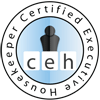Many auto-supply shops have entire aisles devoted to special cleaners and cleaning tools for keeping your vehicle’s paint gleaming, many at prices that are special indeed. When it comes time to wash the outside of a vehicle, though, most cars and trucks in most climates don’t need anything more than the following:
- A wet cloth or sponge. Stick with soft materials here. Abrasive pads or cleaners can easily damage the clear-coat paint found on most vehicles. Special absorbent mitts are readily available.
- A bucket filled with cool or tepid water combined with a couple of ounces (60 ml) of any good hand dishwashing liquid. Don’t use anything harsher, such as automatic dishwasher detergent.
- A garden hose with a nozzle. The nozzle should have rubber or vinyl grips and edges to protect the finish. An all-metal nozzle can scratch paint or dent metal if it slips out of your hand while you’re working.
Park the vehicle in a shady spot and let the vehicle’s metal work cool for at least an hour before starting. While washing, you want to avoid allowing the soapy solution to dry on the paint.
To begin washing, rinse the vehicle thoroughly to remove excess dirt and to wet the soil that remains. Dampened dirt is more easily washed away and less likely to leave fine scratches in the paint as you wash the vehicle.
Wash the vehicle from top to bottom. Soils tend to become heavier and coarser the closer you get to the pavement.
While washing, allow the sponge or cloth to glide over the surface. Use too much pressure, and the dirt will act like sandpaper against the paint, even when wet. Wash the car or truck one section at a time and then rinse that section completely before washing the next one – for example, wash the roof and windows first, followed by the hood, grille and front fenders, followed by each side, and so on. You don’t want to give the washing solution any chance to dry out, since dried soap or detergent will damage or discolor the paint.
Lastly, be sure to wash the tires and rims or wheel covers.
When finished, dry the surface to avoid leaving water spots. A chamois cloth is gentlest. A clean and dry terry-cloth towel also works well, but towels tend to leave a little bit of lint behind. Even so, most such lint will blow away as you drive.
Auto supply stores and home centers do offer a few tools that can come in handy in certain situations, such as the following:
- A soft, long-handled brush or sponge for cleaning tires, wheels, and rocker panels without bending or kneeling, or for washing the roof of a truck or SUV. Stick with models marketed specifically for car washing. A horsehair brush should be gentle enough for most painted surfaces. Nylon brushes, on the other hand, can leave scratches.
- Wheel cleaner, brake-dust cleaner, and bug removers. Many of these products contain solvents that can damage paint and plastics if misused, so read and understand all label instructions and safety precautions before you start.
- A pressure-washing nozzle for rinsing mud off trucks that are driven off-road. Stick with nozzles designed to work using normal water pressure. High-pressure power washers driven by compressors aren’t suitable for use on automotive finishes.
- Polishes and waxes for long-term appearance protection. We won’t offer specific tips here given the variety of products offered and the wide-ranging opinions of car and truck enthusiasts on these products. Whatever you choose, read and follow label instructions carefully for best results.
If you live in an area where the road crew uses rock salt or liquid snow and ice removal chemicals to clear the streets in winter, consider visiting an automatic car wash that offers an undercarriage wash. Use this two or three times a year – a couple of times during the cold months, and once more after the last snowfall. This will help to prevent corrosion from dried de-icing residue left underneath your vehicle.









